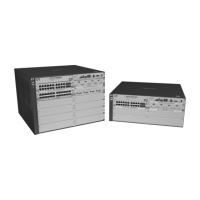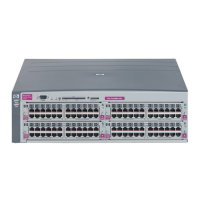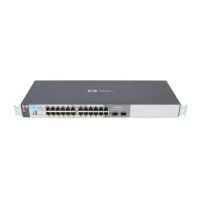Configuring Port-Based and Client-Based Access Control (802.1X)
Configuring Switch Ports as 802.1X Authenticators
Note If you want to implement the optional port security feature (step 7) on the
switch, you should first ensure that the ports you have configured as 802.1X
authenticators operate as expected.
7. If you are using Port Security on the switch, configure the switch to allow
only 802.1X access on ports configured for 802.1X operation, and (if
desired) the action to take if an unauthorized device attempts access
through an 802.1X port. Refer to page
10-40.
8. If you want a port on the switch to operate as a supplicant on a port
operating as an 802.1X authenticator on another device, then configure
the supplicant operation. (Refer to
“Configuring Switch Ports To Operate
As Supplicants for 802.1X Connections to Other Switches” on page 10-42.)
Configuring Switch Ports as 802.1X
Authenticators
802.1X Authentication Commands Page
[no] aaa port-access authenticator < port-list > 10-17
[auth-vid | clear-statistics | client-limit | control | max-requests | 10-17
initialize | logoff-period | quiet-period | server-timeout |
reauthenticate | reauth-period | supplicant-timeout | tx-period |
unauth-period | unauth-vid ]
aaa authentication port-access 10-21
< local | eap-radius | chap-radius >
[no] aaa port-access authenticator active 10-16
[no] port-security [ethernet] < port-list > learn-mode port-access 10-40
802.1X Open VLAN Mode Commands 10-24
802.1X Supplicant Commands 10-42
802.1X-Related Show Commands 10-46
RADIUS server configuration 10-22
10-16

